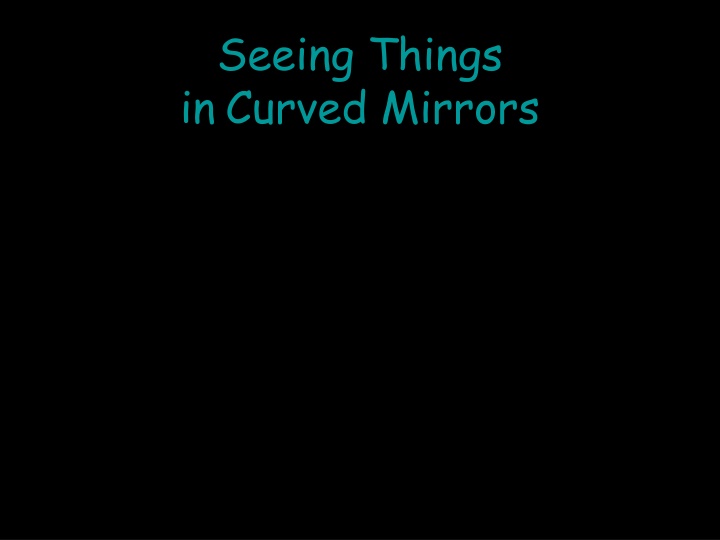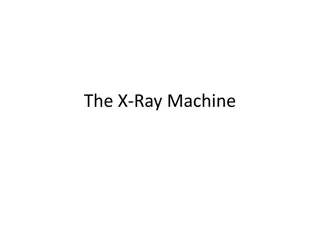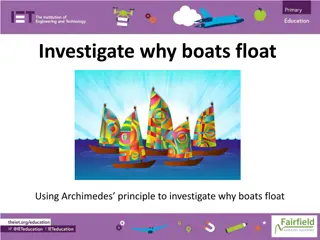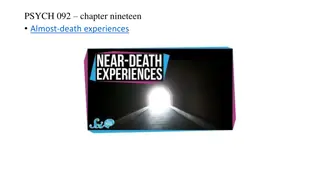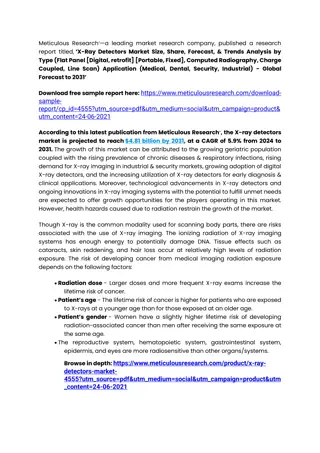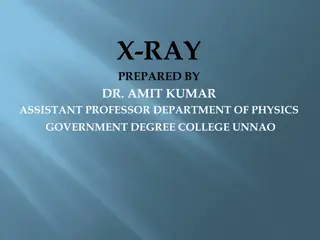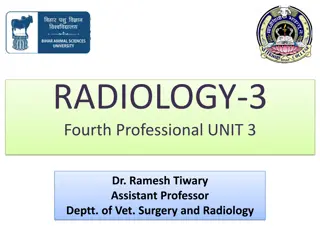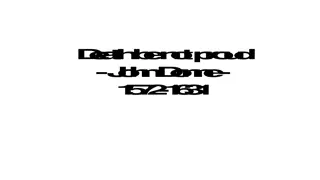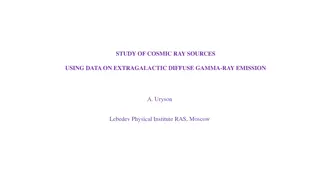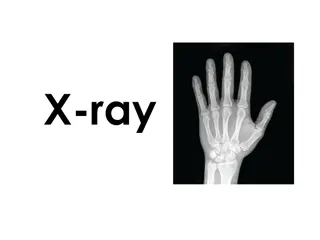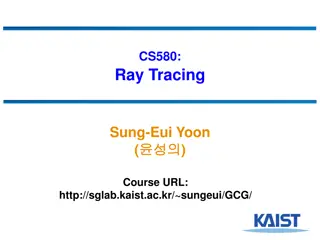Unveiling Archimedes' Mythical Death Ray: A Fascinating Historical Tale
Delve into the intriguing legend surrounding Archimedes and his supposed "death ray" used against an invading Roman fleet, exploring the use of curved mirrors and the theory behind this ancient weaponry. Discover how the reflections of sunlight could have been harnessed to potentially ignite enemy ships, sparking debate over the validity of this historic event.
Download Presentation

Please find below an Image/Link to download the presentation.
The content on the website is provided AS IS for your information and personal use only. It may not be sold, licensed, or shared on other websites without obtaining consent from the author.If you encounter any issues during the download, it is possible that the publisher has removed the file from their server.
You are allowed to download the files provided on this website for personal or commercial use, subject to the condition that they are used lawfully. All files are the property of their respective owners.
The content on the website is provided AS IS for your information and personal use only. It may not be sold, licensed, or shared on other websites without obtaining consent from the author.
E N D
Presentation Transcript
Seeing Things inCurved Mirrors
Archimedes's Death Ray For centuries, it was rumoured that the Greek scientist, Archimedes, used a "burning glass" to focus the sun s rays on an invading Roman fleet which was attacking his home town of Syracuse around 214 B.C. Frompg 65 The Flying Circus of Physics by Jearl Walkers
Archimedes's Death Ray For centuries, it was rumoured that the Greek scientist, Archimedes, used a "burning glass" to focus the sun s rays on an invading Roman fleet which was attacking his home town of Syracuse around 214 B.C. Frompg 65 The Flying Circus of Physics by Jearl Walkers
Archimedse's Death Ray For centuries, it was rumoured that the Greek scientist, Archimedes, used a "burning glass" to focus the sun s rays on an invading Roman fleet which was attacking his home town of Syracuse around 214 B.C. Frompg 65 The Flying Circus of Physics by Jearl Walkers
Archimedes's Death Ray The way that this feat may have been possible was to use many plane mirrors. (Greek soldiers had copper shields which could be highly polished.) Frompg 65 The Flying Circus of Physics by Jearl Walkers
Archimedes's Death Ray Each mirror could be used to reflect a spot of sunlight at the same object (invading Roman ship). Frompg 65 The Flying Circus of Physics by Jearl Walkers
Archimedes's Death Ray This might act like a giant magnifying glass. Frompg 65 The Flying Circus of Physics by Jearl Walkers
Archimedes's Death Ray This might act like a giant magnifying glass and ignite the target. Frompg 65 The Flying Circus of Physics by Jearl Walkers
Archimedes's Death Ray The historical record of this possible event is very weak. It is argued that the feat was impossible given the technology available to Archimedes. Frompg 65 The Flying Circus of Physics by Jearl Walkers
Archimedes's Death Ray There is also a problem in aiming all the mirrors at the target with this. Frompg 65 The Flying Circus of Physics by Jearl Walkers What technique would have to be used for aiming the mirrors at distant objects?
Could it be done today? http://www.youtube.com/watch?v=MDkOaPp_6ug QuickTime and a decompressor are needed to see this picture. Click on Image to play Archimedes s Death Ray Myth Busters Eat Your Heart Out
Look at the mirrors only.
The mirrors can be aligned along a smooth curve so that they still all reflect light from the sun to the same spot. When light rays come from a distant source like the sun, they can be considered parallel.
All incident light rays which are parallel to each other will reflect off any part of the smooth curve and pass through the same spot. This spot is called the Focus.
The Curve is called a Parabola. The symbol for the Focus is (F). Unfortunately, Parabolic mirrors are expensive to make.
A circle can be drawn so that it closely matches the parabola near the central region. Fortunately, Circular (or in 3D, Spherical) mirrors are less expensive to make. The symbol C stands for Centre of Curvature of the Spherical mirror.
Most curved mirrors that are used have a Spherical instead of the more expensive (but better) Parabolic shape. Only a small portion of the Spherical mirror is used so that it closely matches the properties of a Parabolic mirror.
This is why curved mirrors often seem to be quite flat .
The inside of a sphere produces a concave mirror. The outside produces a convex mirror.
2) The Parts of a Concave Mirror C Centre of Curvature F Focus f Focal Length V Vertex
3)Concave Mirror Characteristic Rays Concave mirrors can produce images but they are more complicated than plane mirrors.
3) Concave Mirror Characteristic Rays Certain light rays called Characteristic Rays always reflect the same way from a Concave mirror . These Characteristic Rays can be used to predict what the images will look like.
3)Concave Mirror Characteristic Rays Any incident ray parallel to the principal axis will
3)Concave Mirror Characteristic Rays Any incident ray parallel to the principal axis will reflect through the Focus.
3)Concave Mirror Characteristic Rays Any incident ray passing through the Focus will
3)Concave Mirror Characteristic Rays Any incident ray passing through the Focus will reflect parallel to the principal axis.
3)Concave Mirror Characteristic Rays Any incident ray passing through the Centre of Curvature will
3)Concave Mirror Characteristic Rays Any incident ray passing through the Centre of Curvature will reflect back upon itself.
3)Concave Mirror Characteristic Rays Any incident ray striking the Vertex will
3)Concave Mirror Characteristic Rays Any incident ray striking the Vertex will reflect such that i = r.
Any incident ray parallel to the principal axis will reflect through the Focus.
Any incident ray passing through the Focus will miss the mirror because it is parallel to it.
Any incident ray in a direction the same as if it had passed through the C will
Any incident ray in a direction the same as if it had passed through the C will reflect back upon itself.
Any incident ray striking the Vertex will reflect such that i = r.
This property is used in headlights and flashlights. A bulb located at the Focus produces a parallel beam which travels a long way without diverging and becoming less intense. But, where is the image?
Choose a point just a little closer to C or between C and F. The final ray diagram looks like the one above.
The reflected rays are no longer parallel and meet far away.
Any incident ray parallel to the principal axis will reflect through the Focus.
Any incident ray in a direction the same as if it had passed through F will
Any incident ray in a direction the same as if it had passed through F will reflect parallel to the principal axis.
Any incident ray striking the Vertex will reflect such that i = r.
